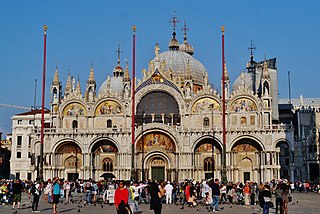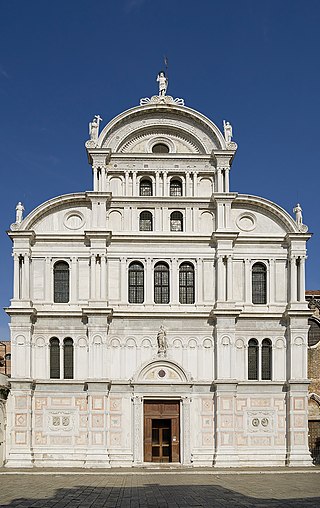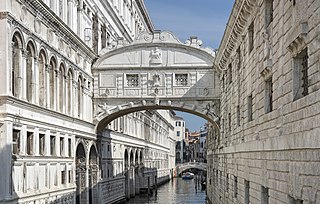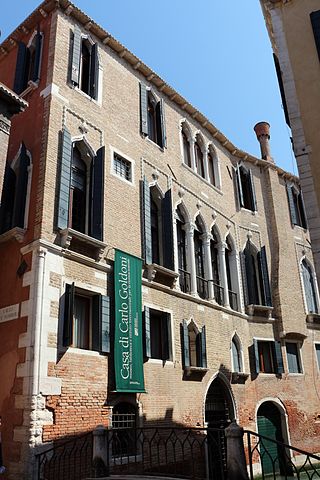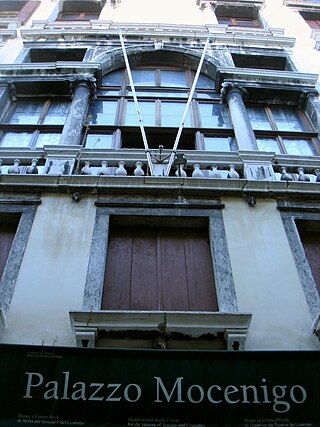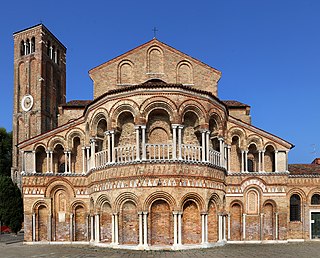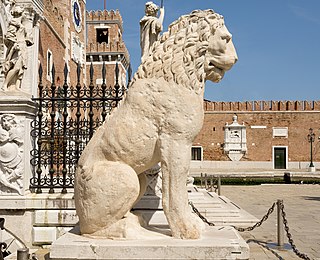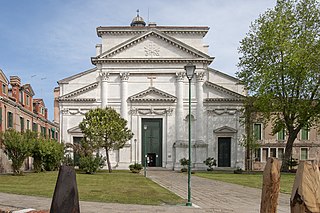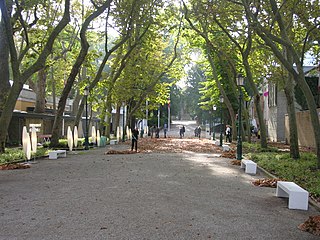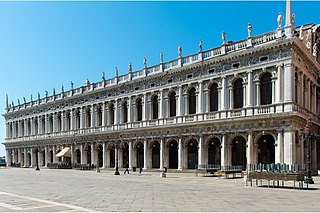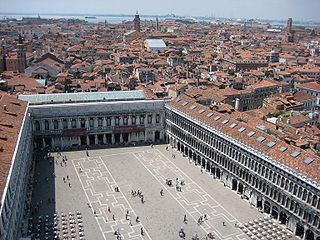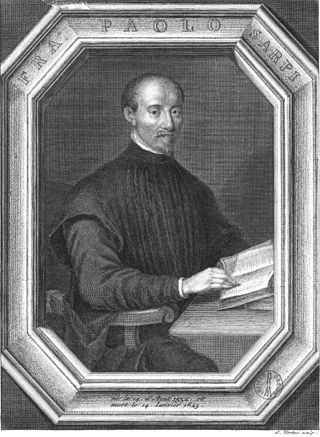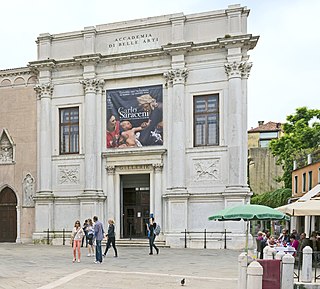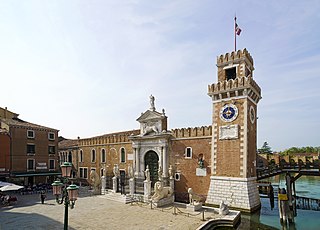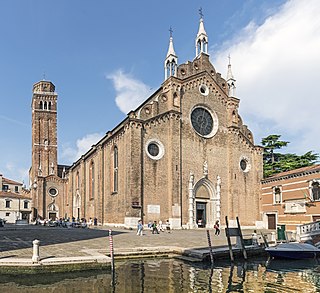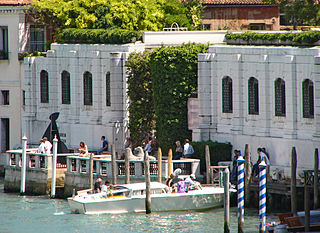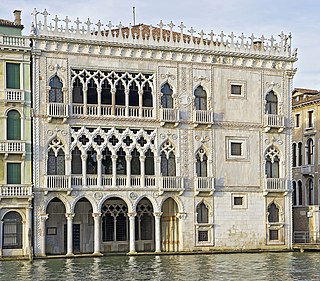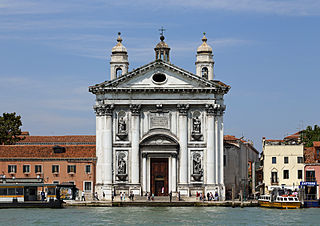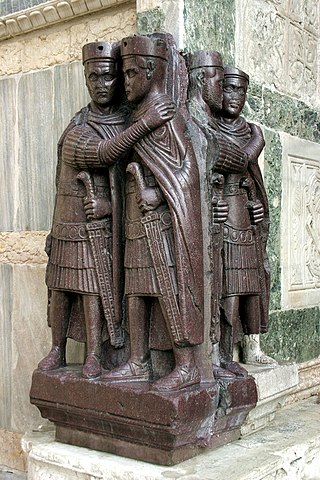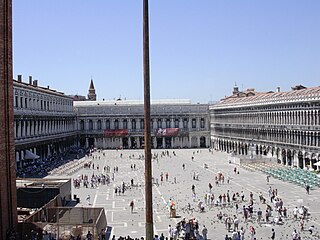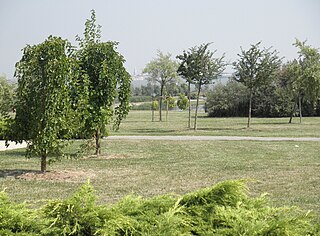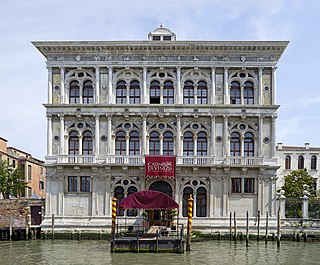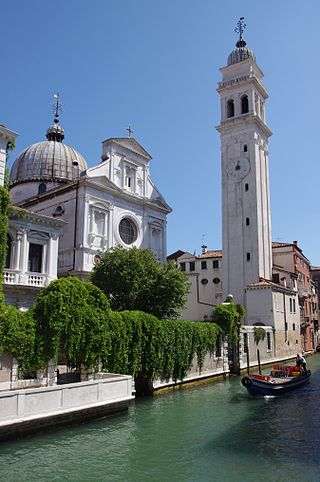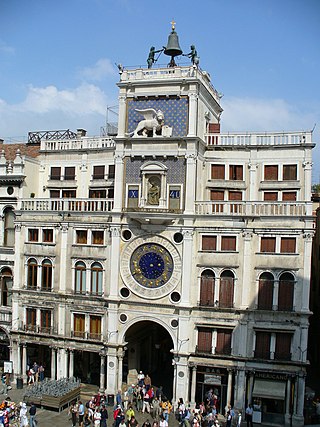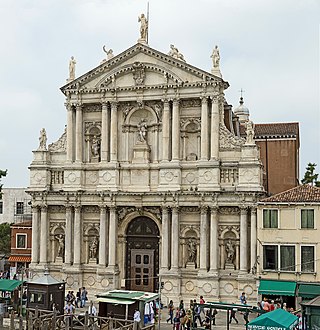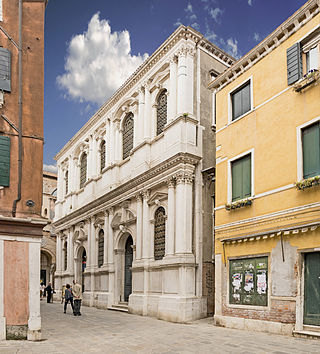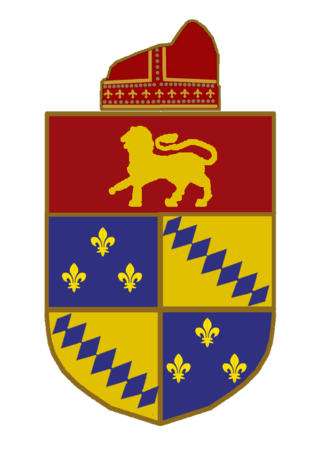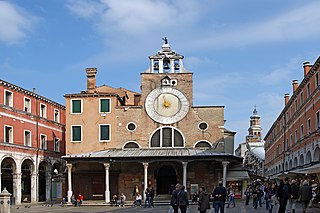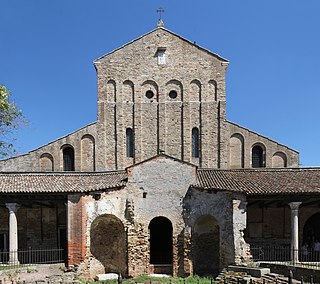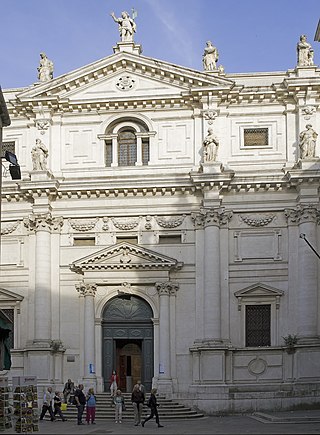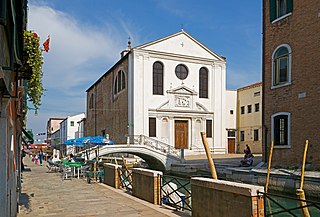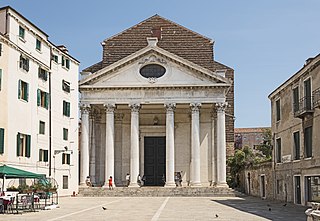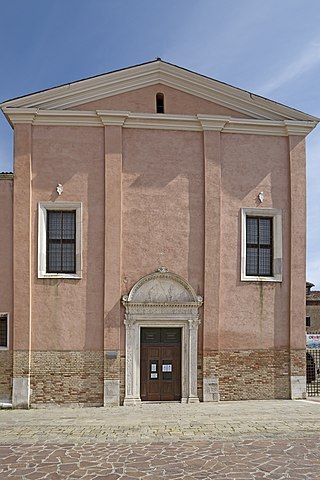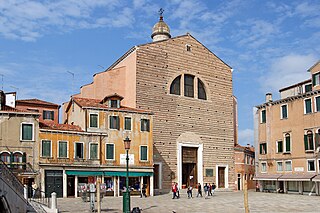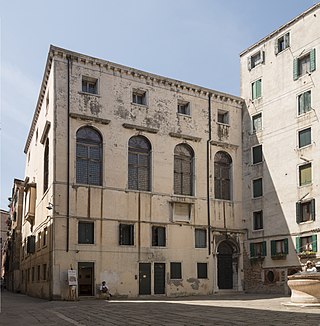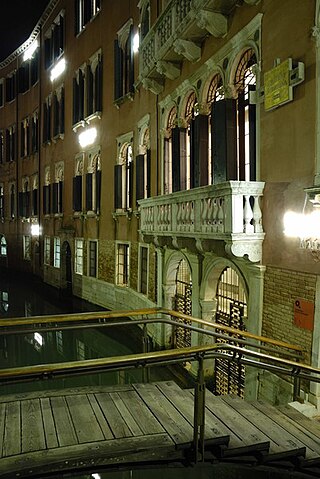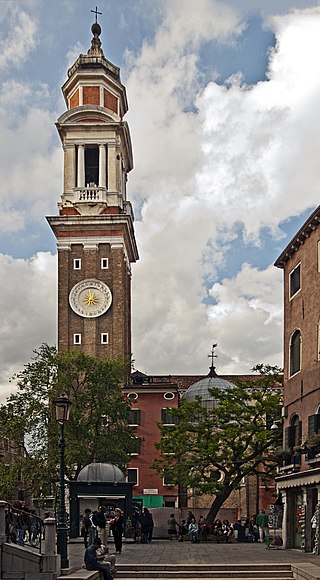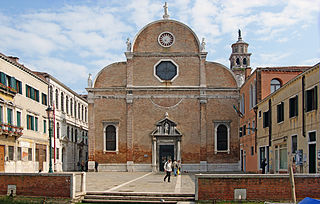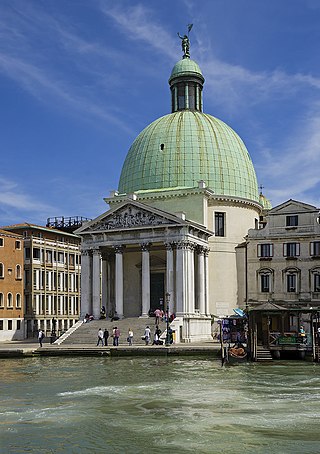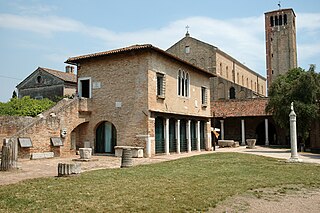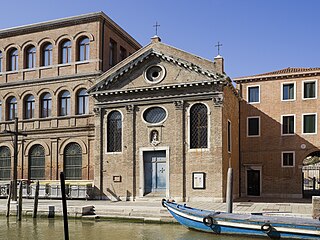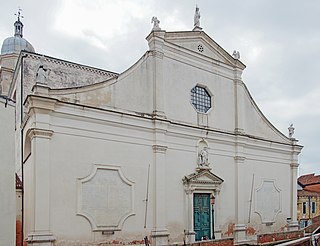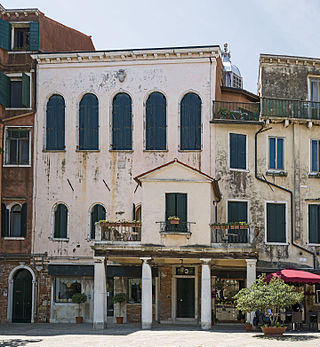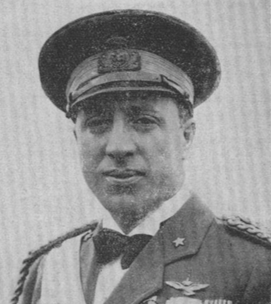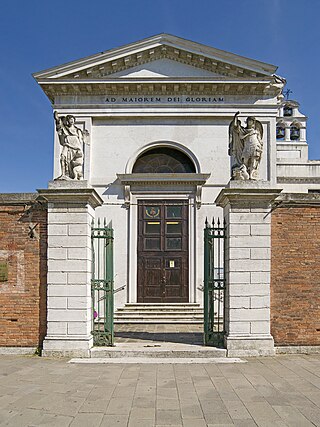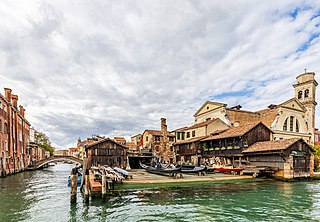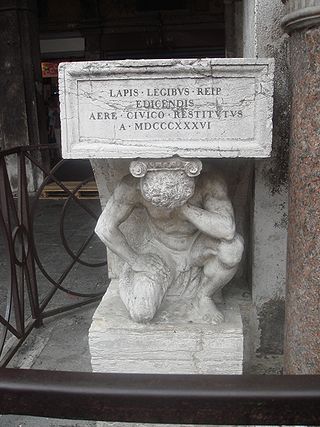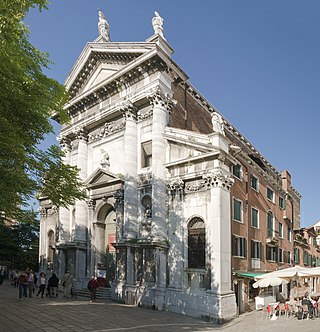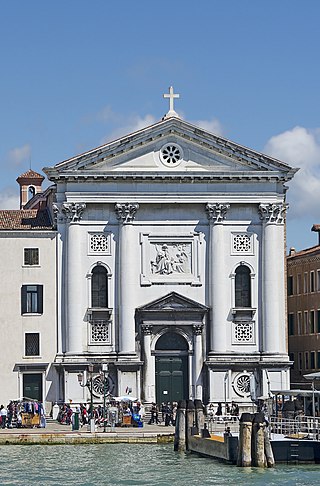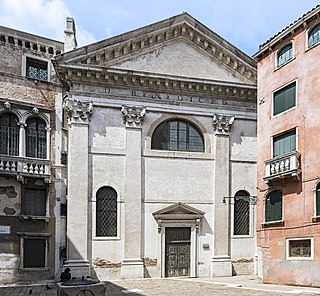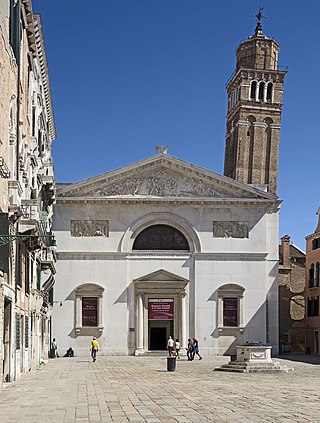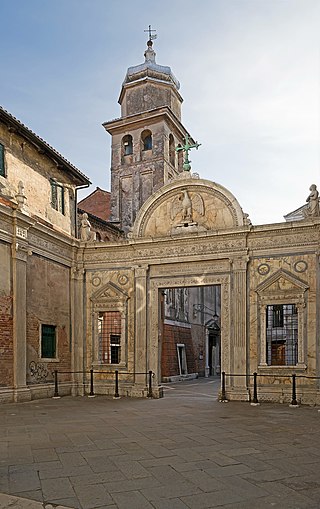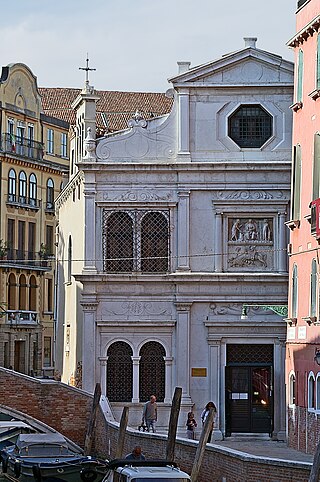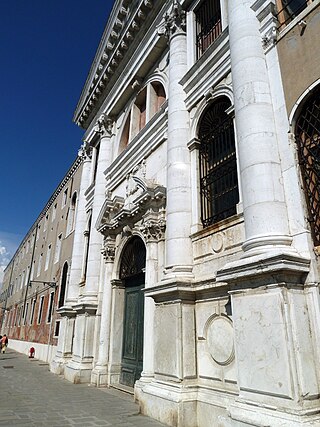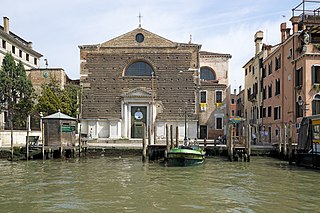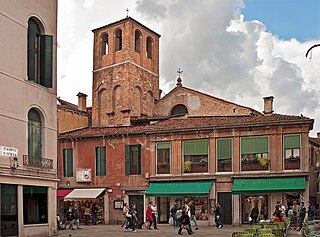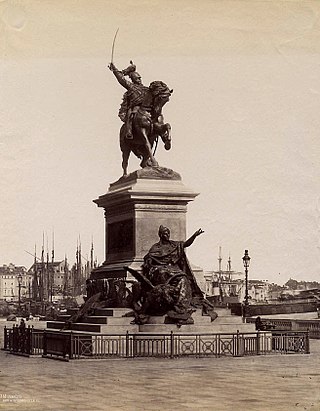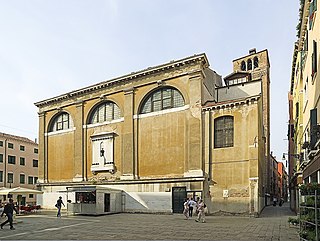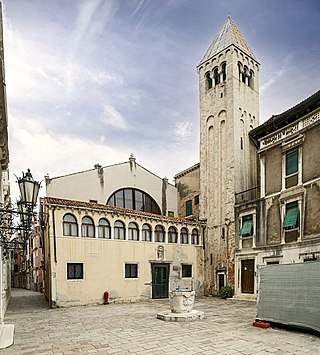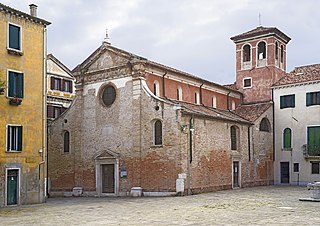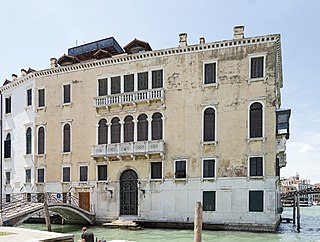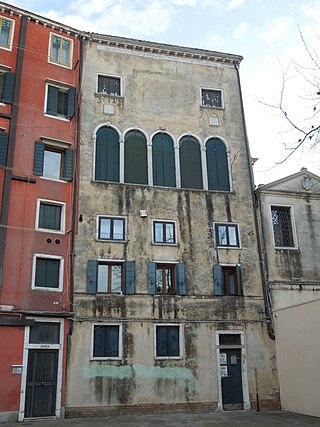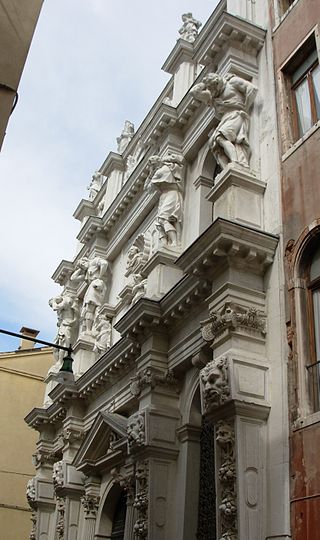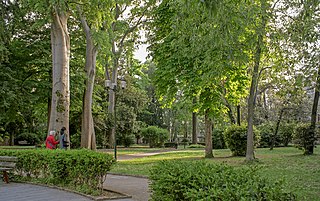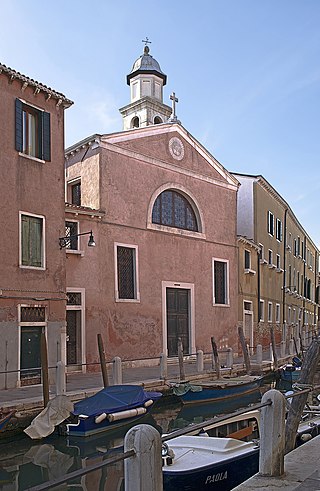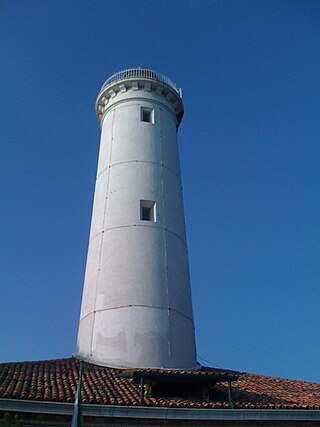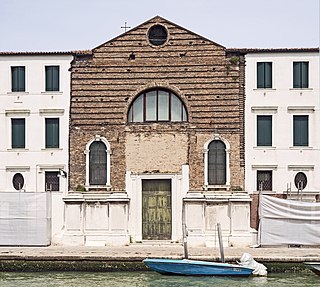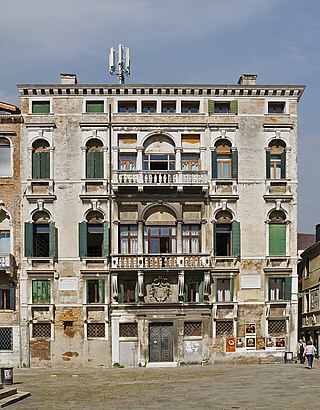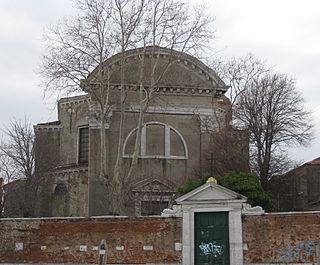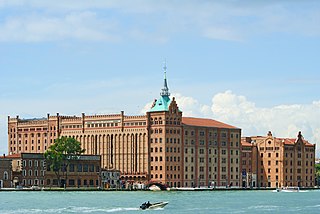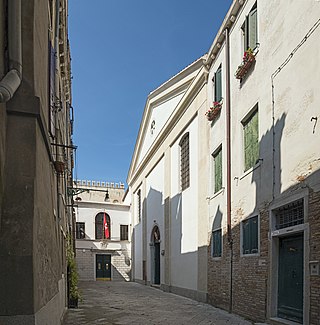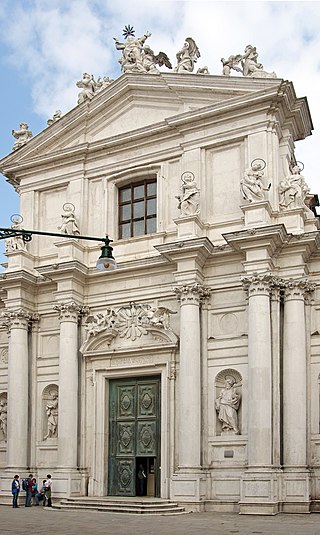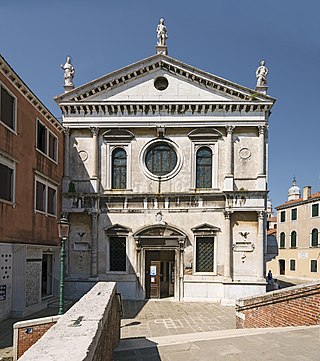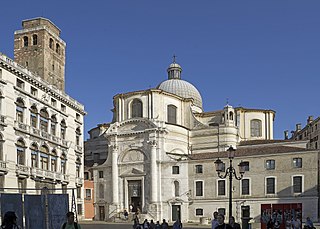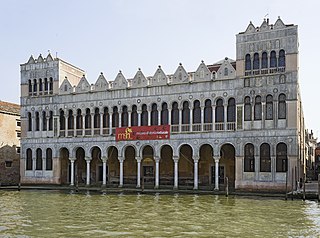88 Sights in Venice, Italy (with Map and Images)
Legend
Premium Sights
Book tickets, guided tours and activities in Venice.
Guided Free Walking Tours
Book free guided walking tours in Venice.
Welcome to your journey through the most beautiful sights in Venice, Italy! Whether you want to discover the city's historical treasures or experience its modern highlights, you'll find everything your heart desires here. Be inspired by our selection and plan your unforgettable adventure in Venice. Dive into the diversity of this fascinating city and discover everything it has to offer.
Sightseeing Tours in VeniceActivities in VeniceThe Patriarchal Cathedral Basilica of Saint Mark, commonly known as St Mark's Basilica, is the cathedral church of the Patriarchate of Venice; it became the episcopal seat of the Patriarch of Venice in 1807, replacing the earlier cathedral of San Pietro di Castello. It is dedicated to and holds the relics of Saint Mark the Evangelist, the patron saint of the city.
The Church of San Zaccaria is a 15th-century former monastic church in central Venice, Italy. It is a large edifice, located in the Campo San Zaccaria, just off the waterfront to the southeast of Piazza San Marco and St Mark's Basilica. It is dedicated to St. Zechariah, the father of John the Baptist.
The Bridge of Sighs is a bridge in Venice, Italy. The enclosed bridge is made of white limestone, has windows with stone bars, passes over the Rio di Palazzo, and connects the New Prison to the interrogation rooms in the Doge's Palace. It was designed by Antonio Contino, whose uncle Antonio da Ponte designed the Rialto Bridge. It was built in 1600.
The House of Carlo Goldoni, or in Italian, Casa di Carlo Goldoni is writer's house museum located in a small palace or palazzetto, that served as the residence of the Italian playwright Carlo Goldoni. Located in San Polo, Venice, it is now a museum and library of theater studies.
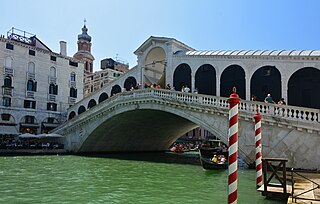
The Rialto Bridge is the oldest of the four bridges spanning the Grand Canal in Venice, Italy. Connecting the sestieri (districts) of San Marco and San Polo, it has been rebuilt several times since its first construction as a pontoon bridge in 1173, and is now a significant tourist attraction in the city.
The Museo di Palazzo Mocenigo is a palazzo near the Church of San Stae, south of the Grand Canal in the sestiere of Santa Croce in Venice, Italy. It is now a museum of fabrics and costumes, run by the Fondazione Musei Civici di Venezia.
The Church of Santa Maria e San Donato is a religious edifice located in Murano, northern Italy. It is known for its twelfth century Byzantine mosaic pavement and is said to contain the relics of Saint Donatus of Euroea as well as large bones behind the altar said to be the bones of a dragon slain by the saint.
The Piraeus Lion is one of four lion statues on display at the Venetian Arsenal, Italy, where it was displayed as a symbol of Venice's patron saint, Saint Mark. The statue is made of white marble and stands some 3 m (9 ft.) high. It is particularly noteworthy for two lengthy runic inscriptions on its shoulders and flanks; these were likely carved by Scandinavians sometime in the 11th century AD.
The Basilica di San Pietro di Castello, commonly called San Pietro di Castello, is a Roman Catholic minor basilica of the Patriarch of Venice located in the Castello sestiere of the Italian city of Venice. The present building dates from the 16th century, but a church has stood on the site since at least the 7th century. From 1451 to 1807, it was the city's cathedral church, though hardly playing the usual dominant role of a cathedral, as it was overshadowed by the "state church" of San Marco and inconveniently located. During its history, the church has undergone a number of alterations and additions by some of Venice's most prominent architects. Andrea Palladio received his first commission in the city of Venice from the Patriarch Vincenzo Diedo to rebuild the facade and interior of St Pietro, but Diedo's death delayed the project.
The Venice Giardini or Giardini della Biennale is an area of parkland in the historic city of Venice which hosts the Venice Biennale Art Festival, a major part of the city's cultural Biennale. The gardens were created by Napoleon Bonaparte who drained an area of marshland in order to create a public garden on the banks of the Bacino di San Marco which is a narrow stretch of water dividing the gardens from St. Mark's Square and the Doge's Palace.
11. Venice
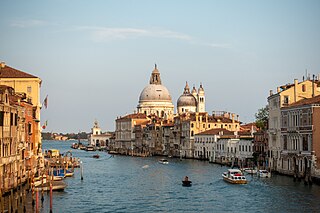
Venice is a city in northeastern Italy and the capital of the Veneto region. It is built on a group of 126 islands that are separated by expanses of open water and by canals; portions of the city are linked by 472 bridges. The islands are in the shallow Venetian Lagoon, an enclosed bay lying between the mouths of the Po and the Piave rivers. In 2020, around 258,685 people resided in greater Venice or the Comune di Venezia, of whom around 51,000 live in the historical island city of Venice and the rest on the mainland (terraferma). Together with the cities of Padua and Treviso, Venice is included in the Padua-Treviso-Venice Metropolitan Area (PATREVE), which is considered a statistical metropolitan area, with a total population of 2.6 million.
12. Doge's Palace
The Doge's Palace is a palace built in Venetian Gothic style, and one of the main landmarks of the city of Venice in northern Italy. The palace was the residence of the Doge of Venice, the supreme authority of the former Republic of Venice. It was built in 1340 and extended and modified in the following centuries. It became a museum in 1923 and is one of the 11 museums run by the Fondazione Musei Civici di Venezia.
13. Marciana National Library
The Marciana Library or Library of Saint Mark is a public library in Venice, Italy. It is one of the earliest surviving public libraries and repositories for manuscripts in Italy and holds one of the world's most significant collections of classical texts. It is named after St Mark, the patron saint of the city.
14. St Mark's Campanile
St Mark's Campanile is the bell tower of St Mark's Basilica in Venice, Italy. The current campanile is a reconstruction completed in 1912, the previous tower having collapsed in 1902. At 98.6 metres (323 ft) in height, it is the tallest structure in Venice and is colloquially termed "el paròn de casa". It is one of the most recognizable symbols of the city.
15. Procuratie Nuove
The Procuratie are three connected buildings along the perimeter of Saint Mark's Square in Venice, Italy. Two of the buildings, the Procuratie Vecchie and the Procuratie Nuove, were constructed by the procurators of Saint Mark, the second-highest dignitaries in the government of the Republic of Venice, who were charged with administering the treasury of the Church of Saint Mark as well as the financial affairs of state wards and trust funds established on behalf of religious and charitable institutions.
16. Paolo Sarpi
Paolo Sarpi was a Venetian historian, prelate, scientist, canon lawyer, polymath and statesman active on behalf of the Venetian Republic during the period of its successful defiance of the papal interdict (1605–1607) and its war (1615–1617) with Austria over the Uskok pirates. His writings, frankly polemical and highly critical of the Catholic Church and its Scholastic tradition, "inspired both Hobbes and Edward Gibbon in their own historical debunkings of priestcraft." Sarpi's major work, the History of the Council of Trent (1619), was published in London in 1619; other works: a History of Ecclesiastical Benefices, History of the Interdict and his Supplement to the History of the Uskoks, appeared posthumously. Organized around single topics, they are early examples of the genre of the historical monograph.
17. Accademia Gallery
The Gallerie dell'Accademia is a museum gallery of pre-19th-century art in Venice, northern Italy. It is housed in the Scuola della Carità on the south bank of the Grand Canal, within the sestiere of Dorsoduro. It was originally the gallery of the Accademia di Belle Arti di Venezia, the art academy of Venice, from which it became independent in 1879, and for which the Ponte dell'Accademia and the Accademia boat landing station for the vaporetto water bus are named. The two institutions remained in the same building until 2004, when the art school moved to the Ospedale degli Incurabili.
18. Arsenale di Venezia
The Venetian Arsenal is a complex of former shipyards and armories clustered together in the city of Venice in northern Italy. Owned by the state, the Arsenal was responsible for the bulk of the Venetian Republic's naval power from the Late Middle Ages to the early modern period. It was "one of the earliest large-scale industrial enterprises in history".
19. Basilica di Santa Maria Gloriosa dei Frari
The Basilica di Santa Maria Gloriosa dei Frari, commonly abbreviated to the Frari, is a church located in the Campo dei Frari at the heart of the San Polo district of Venice, Italy. It is the largest church in the city and it has the status of a minor basilica. The church is dedicated to the Assumption of Mary.
20. Peggy Guggenheim Collection
The Peggy Guggenheim Collection is an art museum on the Grand Canal in the Dorsoduro sestiere of Venice, Italy. It is one of the most visited attractions in Venice. The collection is housed in the Palazzo Venier dei Leoni, an 18th-century palace, which was the home of the American heiress Peggy Guggenheim for three decades. She began displaying her private collection of modern artworks to the public seasonally in 1951. After her death in 1979, it passed to the Solomon R. Guggenheim Foundation, which opened the collection year-round from 1980.
21. Ca' d'Oro
The Ca' d'Oro, or Palazzo Santa Sofia, is a palace on the Grand Canal in Venice, northern Italy. One of the older palaces in the city, its name means "golden house" due to the gilt and polychrome external decorations that once adorned its walls. Since 1927, it has been used as a museum, as the Galleria Giorgio Franchetti.
22. Cavalli di San Marco
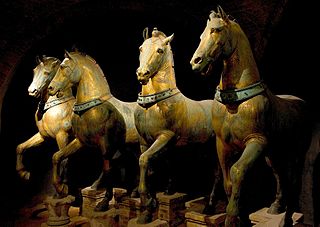
The Horses of Saint Mark, also known as the Triumphal Quadriga or Horses of the Hippodrome of Constantinople, is a set of bronze statues of four horses, originally part of a monument depicting a quadriga. The horses were placed on the facade, on the loggia above the porch, of St Mark's Basilica in Venice, northern Italy, after the sack and looting of Constantinople in 1204. They remained there until looted by Napoleon in 1797 but were returned in 1815. The sculptures have been removed from the facade and placed in the interior of St Mark's for conservation purposes, with replicas in their position on the loggia.
23. Santa Maria del Rosario
Santa Maria del Rosario, commonly known as I Gesuati, is an 18th-century Dominican church in the Sestiere of Dorsoduro, on the Giudecca canal in Venice, northern Italy. The classical style building has a well-lit interior and is exceptional in preserving its original layout and Rococo decoration intact. The church and almost all its sculpture and paintings were created within a thirty-year period: construction began in 1725, the church was consecrated in 1743, and the last sculptural decoration was in place by 1755.
24. Portrait of the Four Tetrarchs
The Portrait of the Four Tetrarchs is a porphyry sculpture group of four Roman emperors dating from around 300 AD. The sculptural group has been fixed to a corner of the façade of St Mark's Basilica in Venice, Italy since the Middle Ages. It probably formed part of the decorations of the Philadelphion in Constantinople, and was removed to Venice in 1204 or soon after.
25. Museo Correr
The Museo Correr is a museum in Venice, northern Italy. Located in St. Mark's Square, Venice, it is one of the 11 civic museums run by the Fondazione Musei Civici di Venezia. The museum extends along the southside of the square on the upper floors of the Procuratorie Nuove. With its rich and varied collections, the Museo Correr covers both the art and history of Venice.
26. Parco San Giuliano
The San Giuliano park is a large urban park located in the municipality of Venice, in the town of the same name. It overlooks the Venice lagoon, at the beginning of the Ponte della Libertà and not far from Marco Polo airport.
27. Ca' Vendramin Calergi - Casinò di Venezia
Ca' Loredan Vendramin Calergi is a 15th-century palace on the Grand Canal in the sestiere (quarter) of Cannaregio in Venice, northern Italy. It was commissioned by the patrician Loredan dynasty, namely Andrea Loredan, and paid for by Doge Leonardo Loredan, with construction starting in 1481. The architecturally distinguished building was the home of many prominent people through history and was the place where composer Richard Wagner died.
28. Chiesa di San Giorgio dei Greci
San Giorgio dei Greci is a church in the sestiere (neighborhood) of Castello, Venice, northern Italy. It was the center of the Scuola dei Greci, the Confraternity of the Greeks in Venice. Around this period there was a similar church in Naples called Santi Pietro e Paolo dei Greci. There was also a Greek Brotherhood of Naples.
29. Forte Carpenedo
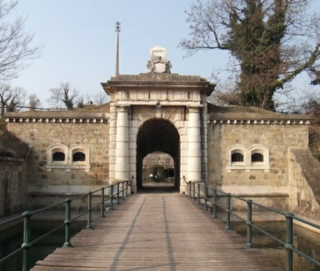
The Forte Vallon, commonly known as Forte Carpenedo is a nineteenth-century fortress and former barracks of the Italian Army located on the mainland near Carpenedo, in the municipality of Venice. Conceived as part of the entrenched camp of Mestre and of the wider defensive system of the lagoon, the fort, partly included in the lowland area prized for its environmental characteristics and classified as a site of community interest - Bosco di Carpenedo; today it has an educational-museum function and hosts numerous cultural and social initiatives.
30. St Mark's Clocktower
The Clock Tower in Venice is an early Renaissance building on the north side of the Piazza San Marco, at the entrance to the Merceria. It comprises a tower, which contains the clock, and lower buildings on each side. It adjoins the eastern end of the Procuratie Vecchie. Both the tower and the clock date from the last decade of the 15th century, though the mechanism of the clock has subsequently been much altered. It was placed where the clock would be visible from the waters of the lagoon and give notice to everyone of the wealth and glory of Venice. The lower two floors of the tower make a monumental archway into the main street of the city, the Merceria, which linked the political and religious centre with the commercial and financial centre. Today it is one of the 11 venues managed by the Fondazione Musei Civici di Venezia.
31. Chiesa di Santa Maria di Nazareth
Santa Maria di Nazareth is a Roman Catholic Carmelite church in Venice, northern Italy. It is also called Church of the Scalzi being the seat in the city of the Discalced Carmelites religious order. Located in the sestiere of Cannaregio, near Venezia Santa Lucia railway station, it was built in the mid-17th century to the designs of Baldassarre Longhena and completed in the last decades of that century.
32. Scuola Grande dei Carmini
The Scuola Grande dei Carmini is a confraternity building in Venice, Italy. It is located in the sestiere of Dorsoduro, before Campo dei Carmini and Campo Santa Margherita, upon which its facade looks. It stands, separated by an alley, to the northeast of the church of Santa Maria dei Carmini.
33. Ex chiesa Santa Caterina
The "Marco Foscarini" high school is the oldest high school in Venice and one of the oldest in Italy, having been founded in 1807 by decree of Eugene of Beauharnais, viceroy of Italy and godson of Napoleon I, who established six high schools in as many cities of the kingdom of Italy. At its foundation it was known as the lyceo-boarding school of Santa Caterina, from the name of the former convent in which it is still located, in the Cannaregio district a few hundred meters from the shore of the Fondamente Nove, and as the I.R. Gymnasium Liceale di Santa Caterina from 1850 to 1867.
34. Chiesa di San Giacomo Apostolo
San Giacomo di Rialto is a church in the sestiere of San Polo, Venice, northern Italy. The inclusion of Rialto in the name distinguishes this church from San Giacomo dell'Orio which is situated in the sestiere of Santa Croce, on the same side of the Grand Canal.
35. Cathedral of Santa Maria Assunta
The Church of Santa Maria Assunta is a basilica church on the island of Torcello, Venice, northern Italy. It is a notable example of Late Paleochristian architecture, one of the most ancient religious edifices in the Veneto, and containing the earliest mosaics in the area of Venice.
36. Chiesa di San Salvador
The Chiesa di San Salvatore is a church in Venice, northern Italy. Known in Venetian as San Salvador, is located on the Campo San Salvador, along the Merceria, the main shopping street of Venice. The church was first consecrated in 1177 by Pope Alexander III shortly after his reconciliation with Emperor Frederick Barbarossa at nearby San Marco. The present church, however, was begun in around 1508 by Giorgio Spavento and continued after his death the following year by Tullio Lombardo, Vincenzo Scamozzi and possibly Jacopo Sansovino. They built a large hall church, formed from three Greek crosses placed end to end. Each has a dome with a lantern to let light into the cavernous interior. The facade was added in 1663 by Giuseppe Sardi.
37. Chiesa di San Giuseppe di Castello
The church of San Giuseppe di Castello is a religious building in the city of Venice, located in the Castello district, near the Napoleonic gardens. The church is part of the Chorus Venezia association.
38. San Nicola da Tolentino
The Chiesa di San Nicolò da Tolentino, commonly known as the Tolentini, is a church in the sestiere of Santa Croce in Venice, northern Italy. It lies in a Campo of the same name and along the Rio dei Tolentini, near the Giardino Papadopoli.
39. Chiesa di San Giobbe
The Church of St Job is a 15th-century Roman Catholic church located overlooking the campo of the same name, known as Sant'Agiopo in Venetian dialect, on the south bank of the Cannaregio canal near Ponte dei Tre Archi in the sestiere of Cannaregio of Venice, northern Italy,
40. San Pantalon
The Chiesa di San Pantaleone Martire, known as San Pantalon in the Venetian language, is a church in the Dorsoduro sestiere of Venice, Italy. It is located on the Campo San Pantalon (square), and is dedicated to Saint Pantaleon.
41. Scuola Ponentina
The Spanish Synagogue is an Orthodox Jewish congregation and synagogue, that is located in the Jewish Ghetto of Venice, Italy. Designed by Baldassare Longhena in the Baroque style, the synagogue was completed in 1580, and it is one of five synagogues that were established in the ghetto.
42. Querini Stampalia Foundation
The Fondazione Querini Stampalia is a cultural institution in Venice, Italy, founded in 1869 at the behest of the last descendant of the Venetian Querini Stampalia family, Conte Giovanni Querini. Architect Carlo Scarpa designed interior, exterior, and garden elements and spaces on the ground floor of the historic building.
43. Palazzo Barbarigo
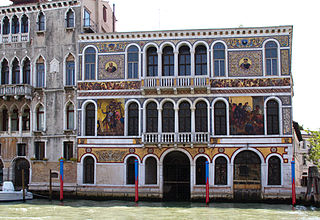
Palazzo Barbarigo is a palace situated facing the Grand Canal of Venice, Italy. It is not to be confused with the Palazzo Barbarigo Minotto and Palazzo Barbarigo della Terrazza, both also on the Grand Canal, and other palazzi, and several villas, once owned by the Barbarigo family.
44. Chiesa dei Santi Apostoli
The Chiesa dei Santi Apostoli di Cristo, commonly called San Apostoli, is a 7th-century Roman Catholic church located in the Cannaregio sestiere of the Italian city of Venice. It is one of the oldest churches in the city and has undergone numerous changes since its foundation. The present building is the result of a major reconstruction project which was undertaken in 1575. The church is notable particularly for the Cornaro Chapel, an important example of Early Renaissance architecture, added by Mauro Codussi during the 1490s. The chapel is the burial place of several members of the powerful Cornaro family, including Catherine Cornaro, Queen of Cyprus and Armenia. The church houses several works of art including pieces by Giambattista Tiepolo and Paolo Veronese.
45. Santa Maria dei Carmini
Santa Maria dei Carmini, also called Santa Maria del Carmelo and commonly known simply as the Carmini, is a large Roman Catholic church in the sestiere, or neighbourhood, of Dorsoduro in Venice, northern Italy. It nestles against the former Scuola Grande di Santa Maria del Carmelo, also known as the Scuola dei Carmini. This charitable confraternity was officially founded in 1597, and arose from a lay women's charitable association, the Pinzocchere dei Carmini. The members of this lay group were associated as tertiaries to the neighbouring Carmelite monastery. They were responsible for stitching the scapulars for the Carmelites.
46. Chiesa di San Simeon Piccolo
San Simeone Piccolo is a church in the sestiere of Santa Croce in Venice, northern Italy. From across the Grand Canal it faces the railroad terminal serving as entrypoint for most visitors to the city.
47. Museo di Torcello
The Provincial Museum of Torcello is a museum founded at the end of 19th century on the Venetian island of Torcello. It has two sections: the Archaeological Section and the Medieval and Modern Section.
48. Chiesa delle Cappuccine
The Capuchin Church is a religious building in the city of Venice, located in the Cannaregio district. The church is dedicated to Mary and St. Francis, but takes its name from the convent which, built at the beginning of the seventeenth century, was demolished following the Napoleonic suppressions.
49. San Raffaele Arcangelo
The Chiesa dell'Angelo Raffaele is a church in Venice, northern Italy, located in the Dorsoduro sestiere. San Raffaele Arcangelo church is one of the only two churches in Venice that are possible to walk all around. It is located in Dorsoduro neighbourhood, close to San Basilio water bus stop.
50. Museo Diocesano
The Diocesan Museum of Sacred Art "Sant'Apollonia" is a museum in Venice, commissioned by the patriarch Albino Luciani, opened to the public in 1977 on the occasion of the exhibition dedicated to the restoration of the bronze horses of St. Mark's Basilica, it was officially inaugurated on October 4, 1980. It is located in the monastery of the Benedictines once on the island of Ammiana, near Torcello, which has now disappeared. The Diocesan Museum of Sacred Art has been closed since 2019 and has not been transferred to the Pinacoteca Manfrediniana.
51. Scuola Italiana
The Italian Synagogue is an Orthodox Jewish congregation and synagogue, that is located in the Jewish Ghetto of Venice, Italy. Completed in 1575, it is one of five synagogues that were established in the ghetto.
52. Pier Luigi Penzo
Pier Luigi Penzo was an Italian aviator and soldier, a veteran of the First World War. He participated in numerous aviation feats during the twenties of the twentieth century, including the Baltic Circuit with Umberto Maddalena and Gascon Guasconi, and the Western Mediterranean Air Cruise organized by Italo Balbo. He lost his life during the rescue and search operations of Umberto Nobile's airship Italia and Roald Amundsen's Latham 47 aircraft.
53. Chiesa del Nome di Gesù
The Church of the Name of Jesus is a religious building in the city of Venice, located in the Santa Croce district, between the first stretch of the Ponte della Libertà and the church of Sant'Andrea della Zirada.
54. Squero de San Trovaso
The squero di San Trovaso is one of the oldest and most famous Venetian squeri. The squero is the classic shipyard where small boats such as gondolas, pupparini, sandoli, s'ciopóni and other boats typical of the Venetian naval tradition were built and repaired.
55. Malibran
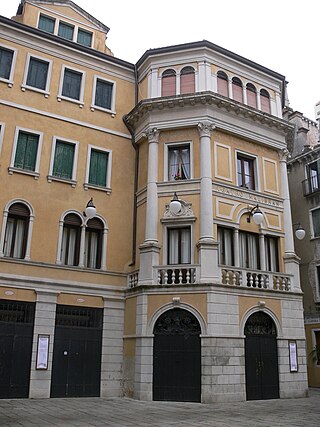
The Teatro Malibran, known over its lifetime by a variety of names, beginning with the Teatro San Giovanni Grisostomo after the nearby church, is an opera house in Venice which was inaugurated in 1678 with a production of the premiere of Carlo Pallavicino's opera Vespasiano. By 1683, it had quickly become known as "the biggest, most beautiful and richest theatre in the city" and its operatic importance throughout the 17th and 18th centuries led to an even grander description by 1730:A true kingdom of marvels....that with the vastness of its magnificent dimension can be rightly compared to the splendours of ancient Rome and that with the grandeur of its more than regal dramatic performances has now conquered the applause and esteem of the whole world.
56. Il Gobbo di Rialto
Il Gobbo di Rialto is a marble statue of a hunchback found opposite the Church of San Giacomo di Rialto at the end of the Rialto in Venice. Sculpted by Pietro da Salò in the 16th century, the statue takes the form of a crouching, naked hunchback supporting a small flight of steps.
57. Chiesa di San Vidal
San Vidal is a former church, and now an event and concert hall located at one end of the Campo Santo Stefano in the Sestiere of San Marco, where it leads into the campiello San Vidal, and from there to the Ponte dell'Accademia that spans the Grand Canal and connects to the Sestiere of Dorsoduro, Venice, Italy.
58. Chiesa di Santa Maria della Pieta
The church of Santa Maria della Pietà or della Visitazione is a prominent church in the sestiere of Castello in Venice, Italy. It is sited on the Riva degli Schiavoni, a short walk from the Doge's Palace.
59. Chiesa di San Beneto
The Chiesa di San Benedetto is a Roman Catholic church in Venice, northern Italy. Generally known as San Beneto in the Venetian dialect, the church faces the square named after it, the Campo San Beneto. It was founded in the 11th century and rebuilt in 1685.
60. Chiesa di San Maurizio
San Maurizio is a Neoclassical-style, deconsecrated church located in the campo San Maurizio in the sestiere of San Marco of the city of Venice, Italy. It now is a Museum focusing on the music of Baroque Venice.
61. Chiesa di San Giovanni Evangelista
The church of San Giovanni Evangelista is a 15th-century religious building in the San Polo sestiere of the Italian city of Venice. It stands across a courtyard from the Scuola Grande di San Giovanni Evangelista.
62. Scuola di San Giorgio degli Schiavoni
The Scuola di San Giorgio degli Schiavoni in Venice, northern Italy, was one of the city's confraternities, a scuola piccola located in the sestiere (neighborhood) of Castello, Venice. Its building has been preserved.
63. Chiesa di San Lazzaro dei Mendicanti
San Lazzaro dei Mendicanti is an ancient church in the sestiere of Castello, Venice, northern Italy, with a facade facing a Rio of the same name. It now serves as the chapel of the Civic Hospital of Venice.
64. Chiesa San Marcuola
The church of San Marcuola is a religious building facing the Grand Canal and located in the sestiere of Cannaregio in Venice, Italy. It is dedicated to the saints Hermagoras and Fortunatus. Palazzo Memmo Martinengo Mandelli is a neighboring building.
65. Chiesa di Santa Sofia
Santa Sofia is a church located in the sestiere (neighborhood) of Cannaregio in Venice, Italy. It should be distinguished from the palazzo Ca' d'Oro on the Grand Canal is also called the Palazzo Santa Sofia.
66. Vittorio Emanuele II
The Monument to Victor Emmanuel II, known by the Venetians simply as the monument, located in Riva degli Schiavoni, in Castello, Venice, Italy. It is an equestrian statue made in 1887 by the Roman sculptor Ettore Ferrari.
67. Ex Chiesa di Santa Chiara
The church of Santa Chiara was a Catholic place of worship in the city of Venice with an adjoining convent inhabited since 1231 by Augustinian monks who were succeeded in the mid-fourteenth century by the Benedictine nuns. After the suppression of the order, following the Napoleonic decrees, the church and the convent were used for industrial and commercial purposes.
Wikipedia: Chiesa di Santa Chiara (Venezia, Murano) (IT), Website
68. Teatro stabile del Veneto Carlo Goldoni
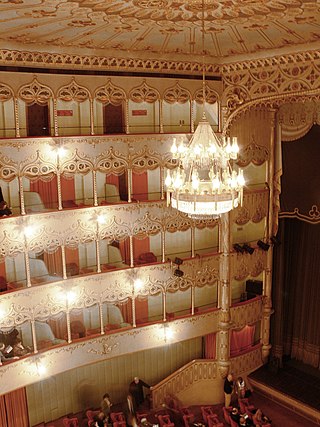
Teatro Goldoni, formerly Teatro San Luca and Teatro Vendramin di San Salvatore, is one of the opera houses and theatres of Venice which today is the home of the Teatro Stabile del Veneto. The modern theatre building is located near the Rialto Bridge in the historic center of Venice.
69. San Cassiano
San Cassiano is a 14th-century Roman Catholic church located in the San Polo sestiere of the Italian city of Venice. A church has stood on the site since 726 with the present building dedicated to Saint Cassian of Imola being consecrated in 1376 and re-modelled during the 17th century. It has a plain exterior with several adjacent buildings overlapping it. Its interior however is richly decorated in a Baroque style.
70. Chiesa di San Samuele
The church of San Samuele in the Venetian district of San Marco is one of the few churches in the city with direct access to the Grand Canal. On the other two sides of the Campo of the same name are Palazzo Grassi and Palazzo Malipiero, as well as the San Samuele vaporetto station.
71. San Giovanni Decollato
The church of San Zan Degolà, which in the Venetian dialect is the abbreviation for San Giovanni Decollato, in English St John beheaded, is a Byzantine-Romanesque-style church and belltower in the sestiere of Santa Croce in Venice, Italy.
72. Palazzo Loredan Cini
The Palazzo Loredan Cini is a Gothic-style palace located between the Palazzo Balbi Valier and the Rio San Vio on the Grand Canal, in the sestiere of Dorsoduro, Venice, Italy. The palace was formed from the amalgamation of the former Palazzo Foscari-Loredan with the adjacent Palazzo Grimani. The narrow facade on the Canal has no entrance, but the facade to the north on the Rio, has a single water door, and is connected to the adjacent campo by a bridge. The facade is decorated with two poliforas.
73. Great German Synagogue
The Great German Synagogue is a former Orthodox Jewish congregation and synagogue, that is located in the Jewish Ghetto of Venice, Italy. Completed in 1528, it is the oldest Venetian synagogue, and one of five synagogues that were established in the ghetto.
74. Chiesa dell'Ospedaletto
Santa Maria dei Derelitti, commonly known as the church of the Ospedaletto, is a Renaissance-style, consecrated church in the Calle della Barbaria delle Tole of the sestiere of Castello, Venice, Italy.
75. Historic Naval Museum
The Museo Storico Navale is a naval history museum located in the Castello district of Venice, near the Venetian Arsenal. The museum was established by the Regia Marina in 1919. Its collections include items relating to the naval and maritime history of Venice, and it has a large number of ship models and weapons on display.
76. Parco Savorgnan
The Parco Savorgnan is a public park in the Venetian district (sestiere) Cannaregio with the size of about 9500 m². It originally belonged to the neighboring Palazzo Savorgnan, the residence of the Venetian noble family of the same name, which is now used for educational purposes. The old and partly exotic plant population used to be protected by temporary greenhouses. Today, the park is owned by the Municipality and the Province of Venice and also includes the green area belonging to Palazzo Venier Manfrin. It is one of the rare inner-city green spaces of the lagoon city and is mainly used for recreational purposes. Remnants of the old garden staffage, such as a pavilion, have been preserved.
77. Chiesa delle Eremite
Le Eremite is a small Catholic church in the Dorsoduro area of Venice, Italy. It was built at the end of the 17th century for Augustinian nuns. It formed part of a larger complex which included a convent and schools run by the nuns. The schools ran until the middle of the last century and taught children of all ages - from infants to high school. The church is dedicated to Jesus, Mary and Joseph. Construction was completed in 1694.
78. Faro Rocchetta
The Rocchetta lighthouse or also the Alberoni lighthouse is located in Alberoni-Malamocco on the Lido of Venice. Originally built to indicate the port to ships coming from the lagoon that intended to leave, it was later upgraded to serve incoming ships as well, when navigation through the port of Malamocco was made bidirectional. The lighthouse overlooks the lagoon but is also visible from the Adriatic Sea.
79. Chiesa di San Simeone Profeta
San Simeone Profeta, also known as San Simeone Grande is a church in the sestiere of Santa Croce in Venice, Italy. The adjective Grande distinguishes this church from the San Simeone Piccolo, which was smaller in size until its 18th-century reconstruction. The near palaces are Palazzo Gradenigo and Palazzo Soranzo Cappello.
80. Chiesa di Santa Maria delle Penitenti
The church of Santa Maria delle Penitenti, is part of a large complex: Pio Loco delle Penitenti, located on the canal Cannaregio, near its exit to the lagoon facing Mestre, in the Northwest edge of Venice, Italy. It gained its name as a charitable institution providing an alternative life to former prostitutes, akin to a Magdalene asylum.
81. Palazzo Bellavite
Palazzo Bellavite is a 16th-century Venetian palace, located in Campo San Maurizio, in the San Marco district. It is also known as Palazzo Bellavite Baffo, because the last member of the Baffo family lived there.
82. Santa Maria del Pianto
Santa Maria del Pianto is a late-Baroque-style, Roman Catholic church in Venice, Italy. This dilapidated octagonal church in a forgotten corner of Venice was designed by Baldassare Longhena, and appears inspired by Longhena's Santa Maria della Salute on the Grand Canal, Venice.
83. Molino Stucky
The Molino Stucky is a Neo-Gothic building in Venice, on the western end of Giudecca island, near the ancient village Fortuny. It was designed by Ernst Wullekopf and built between 1884 and 1895 by the Swiss businessman Giovanni Stucky, whose father had married into the Italian Forti family and moved to the Veneto. It was first built as a flour mill supplied by boats across the lagoon and also operated as a pasta factory.
84. Chiesa di San Giovanni di Malta
San Giovanni di Malta, also known as San Giovanni del Tempio or San Giovanni dei Furlani, is a Roman Catholic church in the Castello sestiere of Venice, Italy, dedicated to John the Baptist. It is believed to have been established by the Knights Hospitaller sometime after 1187, although it is sometimes linked to the Knights Templar. The present building was constructed between 1498 and 1505, and it is located adjacent to a priory. The property was taken over by the state in 1806 and the church was closed in 1810, but in 1841 it was handed over to the Sovereign Military Order of Malta, who reopened the church in 1843.
85. Chiesa di Santa Maria Assunta
The church of Santa Maria Assunta, commonly known as the church of the Jesuits, is a religious building in Venice, located in the Cannaregio district, in Campo dei Gesuiti, not far from the Fondamenta Nuove.
Wikipedia: Chiesa di Santa Maria Assunta detta I Gesuiti (IT)
86. Chiesa di San Sebastian
San Sebastiano is a church in Dorsoduro, Veneto. It contains a considerable part of Paolo Veronese's life's work. There are also sculptures by Alessandro Vittoria in the church, as well as Veronese's tomb on the left in front of the side altar.
87. Chiesa dei Santi Geremia e Lucia
The Church of San Geremia since 2018 also holds the title of Sanctuary of Santa Lucia. It is located in Venice in the Cannaregio district. It is an important place of worship of medieval origin, rebuilt on several occasions but in its current form only between the eighteenth and nineteenth centuries. The property is rich in works of art. It houses various illustrious relics on which the mortal remains of Saint Lucia of Syracuse stand out, which arrived in the church in the nineteenth century, following the demolition of the church of Santa Lucia located on the site of the Venice railway station.
88. Natural History Museum
The Giancarlo Ligabue Museum of Natural History of Venice, until 30 October 2019 the Civic Museum of Natural History, is located inside the Fondaco dei Turchi, the important palace in Venice overlooking the Grand Canal.
Wikipedia: Museo di Storia Naturale di Venezia Giancarlo Ligabue (IT)
Share
How likely are you to recommend us?
Disclaimer Please be aware of your surroundings and do not enter private property. We are not liable for any damages that occur during the tours.
